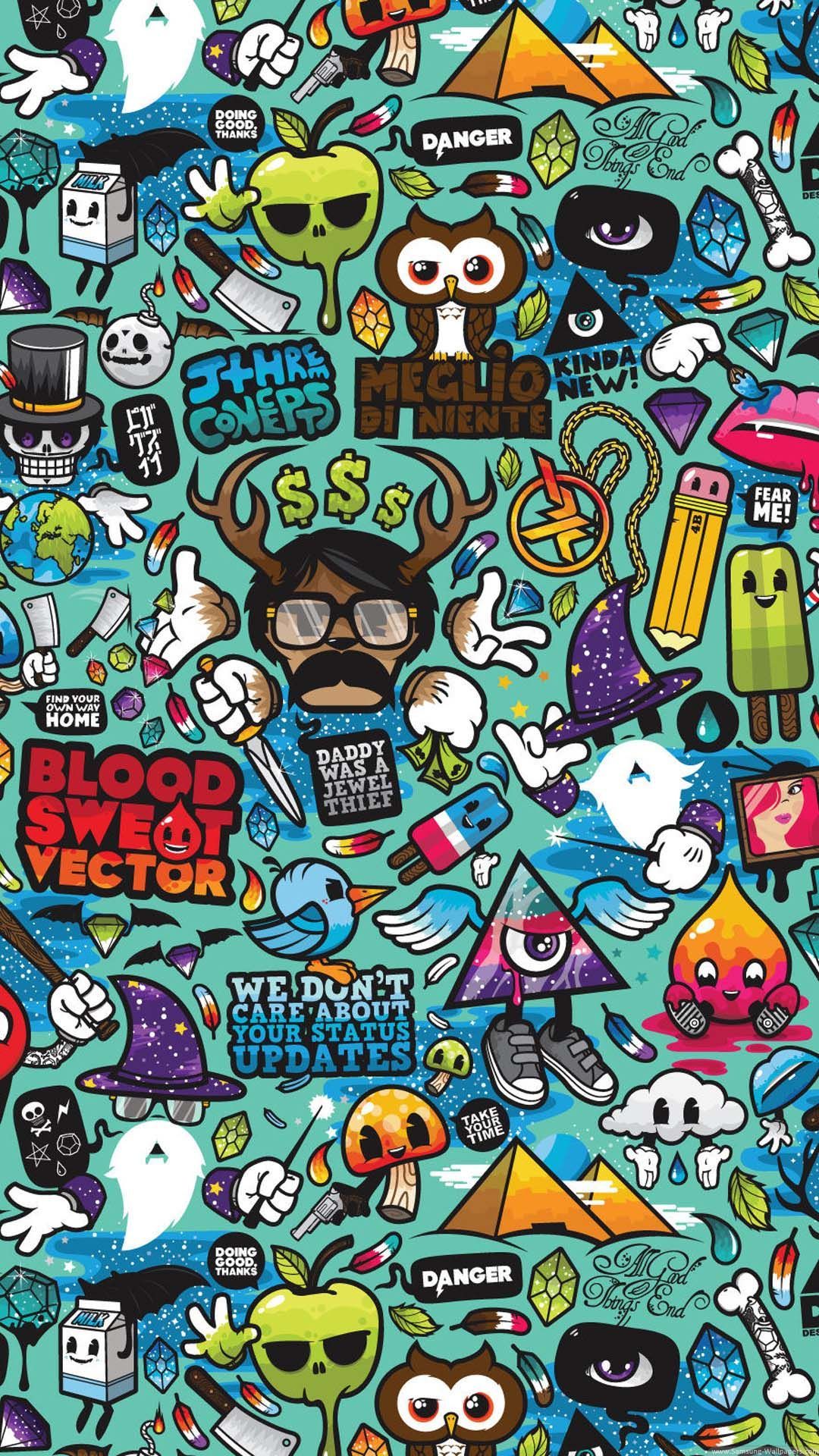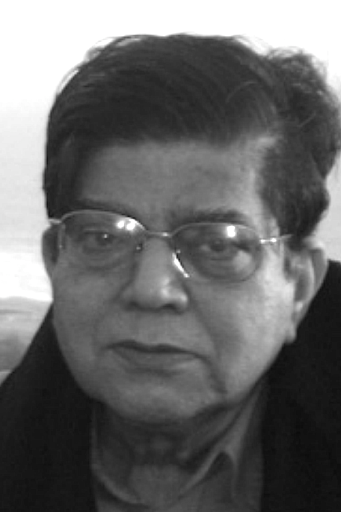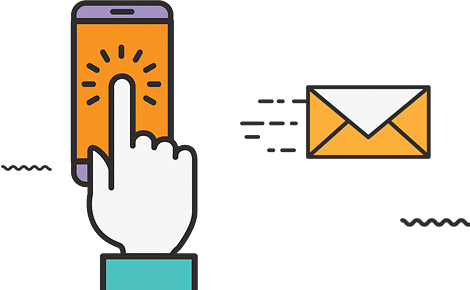Mon-Sat 9am-7pm





Graphic design is a profession or art of visual communication that combines words, images, and ideas to express information to the audience. Graphic design is also termed Communication design & visual communication. Graphic designers create visual solutions to communications problems.
Professionals who use different methods to combine words and images to create a visual representation of any information are called “Graphic Designer”.
A graphic Designer is generally employed in web designing companies. They work quite closely with the web designers to give an awesome look to the images, web documents, videos, and many other web applications.
The graphic designer is a flexible job and many companies search for new and talented graphic designers these days.
The term “Graphic Design” was firstly appeared in print in “New Kind of Printing Calls for New Design” by William Addison Dwiggins in the year 1922.
Logos, magazines, books, print advertisements, signboards, posters, and billboards are some examples of graphic design.
Adobe Creative cloud and Coreldraw Graphics suits are examples of the software package used in the graphic design industry. Adobe Creative Cloud has three main programs which are used by graphic designers namely Photoshop, Illustrator, and InDesign. These specialized computer software packages help them to create layouts and designs.
A web designer should have knowledge of XML, HTML, and basic web programming scripts.

Graphic designers typically do the following tasks:
As a graphic designer, you can work in websites, advertising, books, magazines, posters, computer games, product packaging, exhibitions, and displays
So are you ready to start your career as a Graphic Designer?
The first step to becoming a Graphic Designer is to hold a bachelor's degree in this field. You can pursue diploma, certificate, bachelor, master, and doctoral courses in the field of graphic design. Some best graphic design courses offered by various institutions of India are listed here:
Certificate & Diploma Courses:
Bachelor Courses:
Master Courses:
Doctoral Courses:
Along with pursuing professional courses in graphics design, Candidates can also take online education for learning HTML, CSS, Photoshop, and Web Design.
Undergraduate Courses: If you are looking for admission in UG courses, you must have cleared at least 12th or higher secondary education from any recognized board.
Postgraduate Courses: For admissions in PG programs, you should have a bachelor's degree in the related or equivalent stream.
In India, many universities offer admission to students based on marks secured in the entrance examination. You may appear for the AIEED entrance exam for admissions in undergraduate and postgraduate courses. Here we have listed some examinations in which you can appear for admission in graphic design courses:
Top Entrance Exams for:
Top colleges to study graphic design are:
Graphic designer also creates marketing brochures for products and services, design distinctive logos for products and businesses. Some graphic designer works for design firms while some can work independently.
Many government and private firms recruit graphic designers to work on different projects for several clients. You can also work as a freelancer designer in this field.
As a Graphic Designer in India, the average salary can be expected around Rs.2.5 lacs per year. With good knowledge and creative skills in Dreamweaver and adobe after effects, you can get a high-paying job.
In the USA, the average salary of a graphic designer is around $40 k per year. More talented and creative graphic designers will be able to make more earnings in this field.
Books & Study Materials
Here we are providing some good books which will help you throughout your studies:
The Elements of Graphic Design by Alex W. White
Just My Type by Simon Garfield
The Little Know-It-All: Common Sense for Designers by Silja Bilz
The Art of Looking Sideways by Alan Fletcher
Design, Form, and Chaos by Paul Rand
Graphic Design Theory From the Field by Helen Armstrong
The Graphic Design: Reference + Specification Book by Poppy Evans and Aarsis Sherin
Guide To Graphic Design by Scott W. Santoro
The interesting thing about graphic design is that you get to employ “opposite” functions of your brain as you work. There’s a theory out there that the right hemisphere is responsible for creative thinking, art awareness, and 3-D forms, whereas the left hemisphere is the side that helps you think with logic, facts, and sequencing.
As a graphic designer, you’re not only coming up with creative ways to shape logos and form graphics, but you’re also thinking logically about how to use the tools in InDesign, Illustrator, and Photoshop. There can be measurements and numbers involved, and if you’re a freelancer, you’ll have to think logically about how to manage your business, send invoices and keep track of what you owe for taxes.
“It’s about visual problem solving and aesthetics, so if you consider yourself a strong left- and right-brain thinker, it can be a very balanced career to be in,” says Shana Haynie, co-founder and creative director for Vulpine Interactive.
Those who choose creative careers like graphic design often have the luxury of choosing how, when, and where they want to work. If you find that you’re a more free-spirited type and work well without the structure of an office, you might really enjoy working as a freelancer. Setting your own schedule, and managing your own clients isn’t always easy, but it can be liberating.
If you learn toward the more logical and structured side of things, working part-time or full time at an agency or in-house with a company might be more up your alley. There’s also the option to do a combination of the two as well. You might enjoy the versatility of working from a coffee shop on some days and going into the office and working with your team on other days.
“There is a lot of flexibility in what you can do with this skill set in terms of work environment,” explains Haynie.
Let’s face it: Graphic design is visual, and most people are quickly drawn to eye-catching and impactful graphics. As the creator of visual stimuli, it’s only natural that you’ll end up getting lots of recognition for your work.
Whether you’re designing medals for marathons, a new logo and set of brand standards for a company, or a large-scale graphic for a hallway in a building, chances are high that people will notice—and compliment you on your excellent work if given the opportunity.
“Graphic design is a skill that is widely coveted in many industries and can be seen as a bonus if you ever decide to move in the direction of marketing or entrepreneurship, for instance,” says Haynie.
All businesses need to design work completed in some fashion or form. Whether it’s their main company logo, brochures advertising services, or website graphics, the need for designers is high. If you end up pursuing another focus in your career, you’ll only be seen as more valuable for your skills in graphic design.
:
Everyone has opinions about what they think “looks good.” Beauty is subjective, so what you make as a graphic designer and consider attractive might not be the same thing your client enjoys.
“Everyone has an opinion about what you create,” says Taylor Kerby, creative director at Cave Social.
The unfortunate part of this truth is that, generally, you’ll need to appease your client—and that might mean designing a logo or graphic that doesn’t have the look and feel you would have naturally chosen. This also means having to scrap or significantly change a design you feel strongly about.
Client feedback, and the edits that come with it, can be pretty frustrating. It’s important to set good boundaries at the beginning of a project, or you might end up editing and re-editing a graphic for weeks.
“Projects often go through twenty or more rounds of edits because of large company hierarchies,” says Kerby.
It’s a good idea to tell the client exactly how many rounds of edits are included in your pricing and hold strong when they ask for changes.
“You may fall into the ‘Just one more quick revision’ or ‘Can we see it this way?’ dilemma if you don’t set an extremely clear scope of work upfront,” says Haynie.
You’ll find out pretty quickly that many clients—and people in general—think graphic design is simple. Questions like, “Can you just throw a logo together quick for me?” or assumptions about how long it will take you to design something can be disheartening, especially because the graphic design requires a very specific skillset. Friends might ask you to create posters for free, and businesses might not recognize the potential you offer.
Gently reminding people about how long a design actually takes and how complicated it is can help dispel these conjectures. It’s also important to rally for your pricing and hold fast to your cost.
“No one will want to pay you what you're worth,” says Scott Stickane, owner of creative agency, House of Sticks. It’s up to you to stand up for yourself and the value of your work—which isn’t always easy.
Whether or not their skills are truly developed, graphic designers abound these days. There are a lot of freelance designers out there, as well as a lot of agencies, so the market is competitive, meaning you’ll really have to market yourself. You have to have a portfolio in order to get work, but it’s tough to create a portfolio without work.
If you’re looking for ways to beef up your portfolio, keep in mind that you can always include design projects from your time in school or at an internship. There are also plenty of organizations that will take your designs for free. While it isn’t a habit you should get into, there’s no shame in designing a few free logos or posters for a worthy cause in order to build experience.


Skills needed in a graphic design job are given below:
You can easily find jobs in various design consultancies, advertising agencies, design studio, educational institutions, publishers, marketing firms and many other places. After completing a degree in graphic design, you may also set up your own design studio or can work as an exhibiting artist.
Call us at +91 9205084085, Monday - Friday, 9 am - 7 pm


